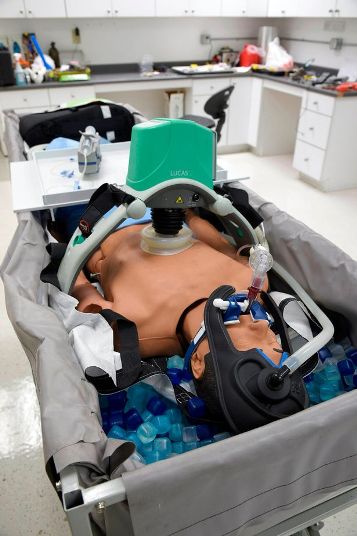Cormac Seachoy was 27 when he tragically died and was cryogenically frozen and he is just one of an increasing number of Brits
https://goo.gl/ovq0NW
Image Credit : mirror.co.uk
Click On The URL Or PICTURE for the complete News, Videos and more photos.
Cryonics is the low-temperature preservation (usually at -196°C) of people who cannot be sustained by contemporary medicine, with the hope that resuscitation and restoration to full health may be possible in the far future. Cryopreservation of humans is not reversible with present technology; cryonicists hope that medical advances will someday allow cryopreserved people to be revived.
Cryonics is regarded with skepticism within the mainstream scientific community and is not part of normal medical practice. It is not known if it will ever be possible to revive a cryopreserved human being. Cryonics depends on beliefs that death is a process rather than an event, clinical death is a prognosis of death rather than a diagnosis of death, and that the cryonics patient has not experienced information-theoretic death.Such views are at the speculative edge of medicine.
Cryonics procedures can only begin after legal death, and cryonics “patients” are considered legally dead. Cryonics procedures ideally begin within minutes of cardiac arrest, and use cryoprotectants to prevent ice formation during cryopreservation. The first corpse to be cryopreserved was that of Dr. James Bedford in 1967. As of 2014, about 250 bodies were cryopreserved in the United States, and 1,500 people had made arrangements for cryopreservation after their legal death.
Costs can include payment for medical personnel to be on call for death, vitrification, transportation in dry ice to a preservation facility, and payment into a trust fund intended to cover indefinite storage in liquid nitrogen and future revival costs. As of 2011, U.S. cryopreservation costs can range from $28,000 to $200,000, and are often financed via life insurance. KrioRus, which stores bodies communally in large dewars, charges $12,000 to $36,000 for the procedure. Some patients opt to have only their head, rather than their whole body, cryopreserved. As of 2016, four facilities exist in the world to retain cryopreserved bodies; three are in the U.S., and one is in Russia. As of 2014, about 250 people have been cryogenically preserved in the U.S., and around 1,500 more have signed up to be preserved.
Famous people who are cryopreserved
Among the cryopreserved are James Bedford,[65] Dick Clair,[65] L. Stephen Coles (in 2014),[66] Thomas K. Donaldson,[65] FM-2030,[65] Hal Finney[67] (in 2014), Jerry Leaf,[65] John-Henry Williams,[65] and Ted Williams.


